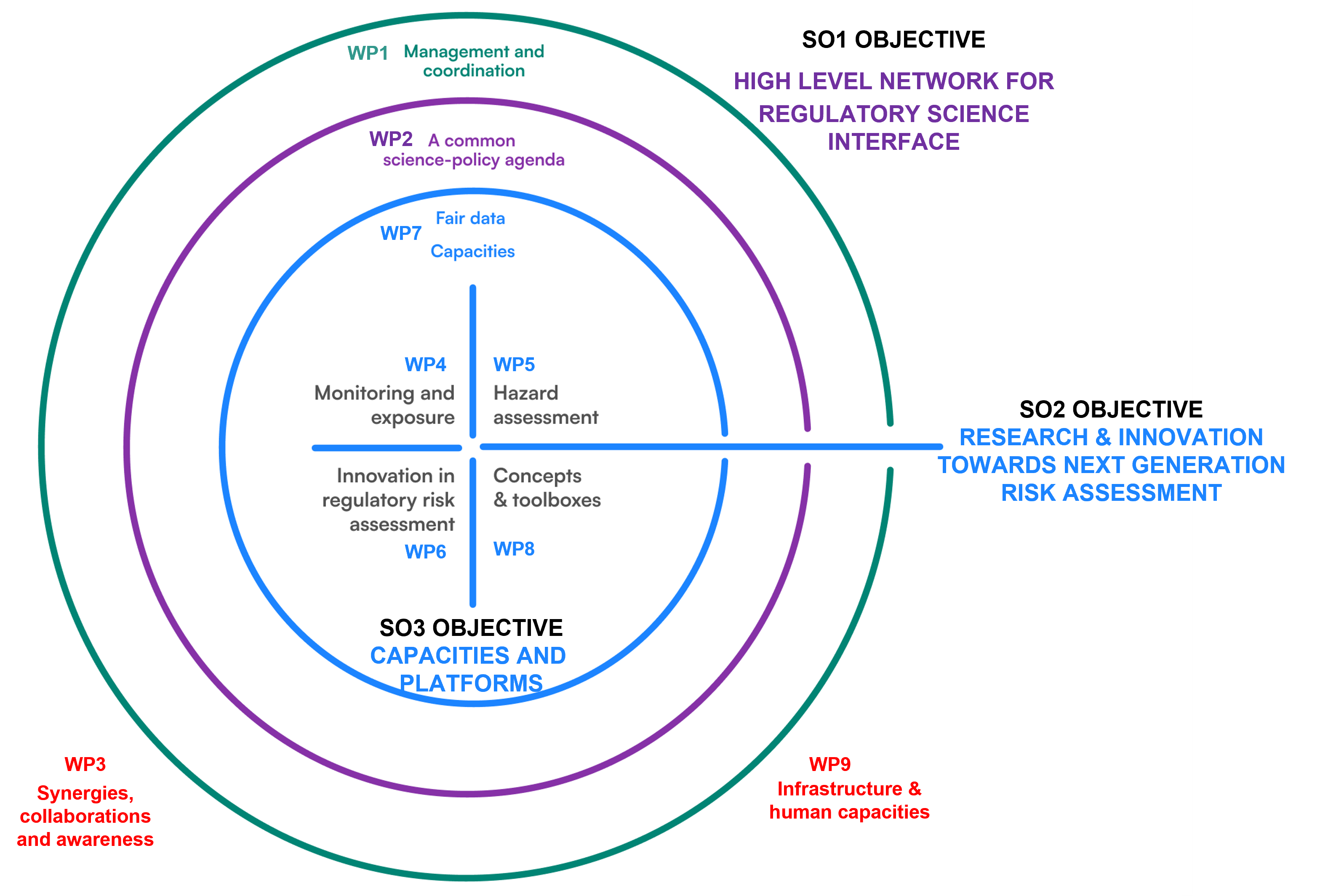Partnership for the Assessment of Risk from Chemicals (PARC)

The European Partnership for the Assessment of Risks from Chemicals (PARC) is a partnership which comprises over 200 partners from 28 countries and three EU authorities (i. e. European Chemicals Agency (ECHA), European Environment Agency (EEA) and European Food Safety Authority (EFSA)). Half of PARC's funding is provided by the EU through Horizon Europe, the European Framework Programme for Research and Innovation. The other half is provided by the respective partner countries. Over the next seven years, the partnership aims to consolidate and strengthen the EU’s research and innovation capacity for chemical risk assessment to protect both human health and the environment.
PARC is a flagship of European toxicological consumer and environmental protection and the first large-scale EU programme with a direct regulatory relevance and special significance for future risk assessment in Europe. In PARC, competent authorities from EU Member States and from outside of the EU, other relevant EU regulatory bodies in the field of chemical risk assessment, but also a significant number of leading research institutions as well as other organisations are represented. In addition, PARC has an explicit regulatory focus to adequately address remaining data gaps, uncertainties and open questions regarding human and environmental toxicology as well as exposure. With new data, knowledge, methods, networks and competences, current and upcoming challenges in the field of chemical safety are to be highlighted and addressed. The seven-year partnership is coordinated by the French Agency for Food, Environmental and Occupational Health & Safety (ANSES).
PARC’s mission is to address current, emerging and novel chemical safety challenges and to enable the transition to the Next Generation Risk Assessment (NGRA), in line with the European Green Deal’s zero-pollution ambition for a toxic free environment and in particular with the Chemicals Strategy for Sustainability Towards a Toxic-Free Environment.
PARC is organised in nine work packages (WPs) working closely together to achieve three specific objectives (SO):
- SO1 – An EU-wide sustainable cross-disciplinary network to identify and agree on research and innovation needs and to support research uptake into regulatory chemical risk assessment.
- SO2 – Joint EU research and innovation activities responding to identified priorities in support of current regulatory risk assessment processes for chemical substances and to emerging challenges.
- SO3 –?Strengthening existing capacities and building new transdisciplinary platforms to support chemical risk assessment.

Figure 1: Structure of work packages and specific objectives in PARC.
PARC comprises the following nine work packages (WP) and respective main responsibilities:
WP1: Coordination and management
- Overall executive management and support of the partnership
- Scientific steering and implementation of Annual Work Plans (AWP)
- Impact evaluation and monitoring of the performance indicators of the partnership
- Ethics framework
WP2: A common science-policy agenda
- Priority setting
- Knowledge management and uptake into policy
- Sustainability
WP3: Synergies, cooperation and awareness
- Stakeholder forum and international board
- Communication and dissemination
- Networking and synergies
WP4: Monitoring and exposure
- Human biomonitoring (HBM)
- Analytical laboratory network for HBM
- Multisource monitoring
- Innovative methods and tools for monitoring and surveys
WP5: Hazard assessment
- Toxicity testing addressing data gaps of concern
- Innovative methods and tools for toxicity testing and modelling
- Quantitative systems toxicology and development of new AOPs
WP6: Innovation in regulatory risk assessment
- Integrated Approaches to Testing and Assessment (IATA)
- Integrative exposure and risk assessment
- Review of risk assessment methodologies
- Transposing results to regulatory risk assessment methodologies
WP7: FAIR data
- Data policy (management, harmonisation, interoperability, exchange)
- Data libraries
- Innovation for data analysis and uncertainty
WP8: Concepts and toolboxes
- Safe-by-design
- Early warning system
- Integrative models
WP9: Building infrastructural and human capacities
- Laboratory capacities and networking
- Training and capacity building
- Joint activities – harmonization
- Training
The German Federal Institute for Risk Assessment (BfR) and the German Environment Agency (UBA) are the two leading institutions in Germany, so called Grant Signatories (GS). A total of 16 additional German institutions ("Affiliated Entities") are also involved in PARC.
The BfR is mainly involved in WP2 and WP5 of PARC and jointly coordinates the German PARC National Hub (PARC-NH) with UBA. Detailed information on BfRs role in the partnership can be found here.
If you are interested in further information around PARC and PARC-relating topics, please read the following pages:
Official PARC website: Provides all information and latest news on the partnership and the relevant information to subscribe to the PARC Newsletter as well as the PARC Science Digest to stay updated.
PARCopedia: PARC’s knowledge management and social media platform for the professional risk assessment community. Available online from November 2023.
Chemical Safety: Provides general information on chemical risk assessment.
General information of PARC:
Duration: 05/2022 - 04/2029
Funding programme / funding institution: European Union (EU) - Belgium
Grant number: 101057014
Project homepage: http://www.eu-parc.eu
